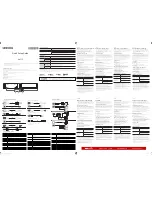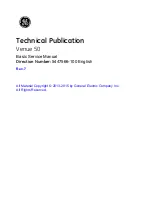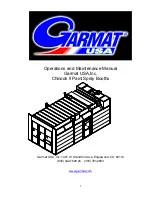
14
4.9
Blast wheel
The heart of the blast cleaning machine is the blast wheel which throws the abrasive onto the surface to be
cleaned by using centrifugal force. The blast wheel is placed in a protective housing lined with replaceable
wear plates. The blast wheel is driven by an electric motor.
Around the centre of the blastwheel there is the impeller, feeding dosed quantities of abrasive onto the blades
of the turning blast wheel. On top of this is the control cage which, once it is carefully set, regulates the flow of
abrasive.
4.10 The abrasive valve
Between the abrasive storage hopper and the feed spout there is a valve incorporating a
permanent magnet in order to control the abrasive flow towards the blastwheel. Any
change in the opening of the magnetic valve causes the amount of abrasive fed to the
blastwheel to change. The change in the abrasive fed can be read from the ammeter.
The valve is hand-operated by the
abrasive control lever
. This lever is located on the
control box and can be adjusted so that any quantity of abrasive can be fed to the
blastwheel. Optimum blast cleaning power is reached when the ammeter indicates the
operating current. It is not permitted to blast with a higher current value.
4.11 Separator
The abrasive separator is mounted to the end of the rebound plenum. It separates the abrasive from
contaminants and feeds the cleaned abrasive back to the abrasive circuit. A wire mesh is fitted to prevent any
large contaminants from getting into the blast wheel. In order to clean the wire mesh drawer, the separator
cover can be removed or the wire mesh drawer can be removed from the side. Check and empty the drawer
before and after each operation.
During operation U should check the separator tray every 3 hours for foreign matter and large contaminants.
1
Wheel hub
2
Blast wheel
3
Blast wheel cover plate
4
Control cage shim
5
Control cage
6
Control cage clamps
1
Separator
2
Separator drawer (wire mesh)
3
Deflector
4
Separator cover
1
2
3
4
5
6















































